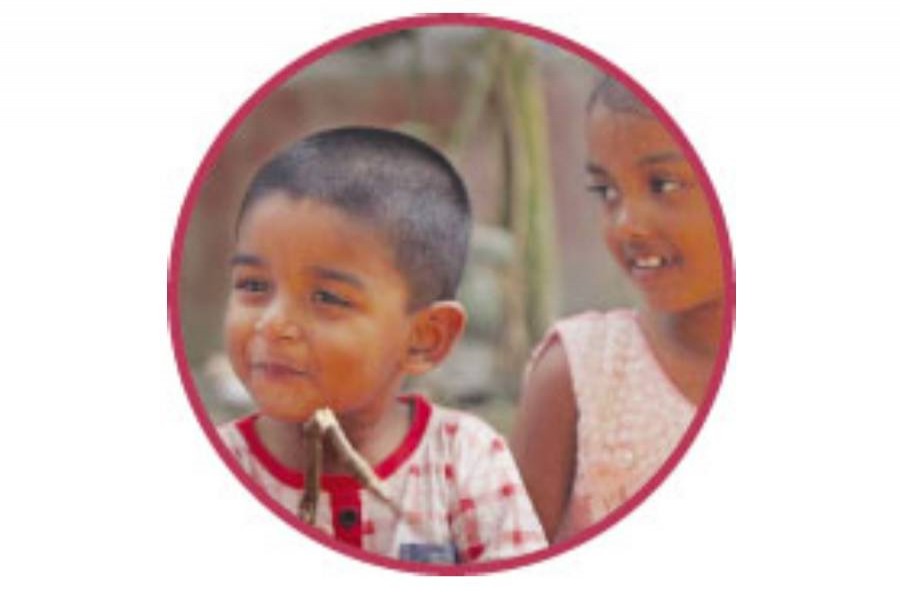A seminar titled 'Lead poisoning in Bangladesh: Research Evidence for Urgent Action' was jointly organised by the Directorate General of Health Services, the ICDDR,B and the UNICEF recently. Its findings are quite disturbing. The presence of lead in batteries and the burgeoning recycling of used lead batteries have been a growing business in and around Dhaka city for some years now. What the study tells us is that lead poising has taken a turn for the worse, especially for children's health.
Some seven studies were conducted and their findings were shared. All the children who were tested for presence of lead in blood turned out to have dangerous levels of lead. In children aged below five, the presence of lead can lead to brain damage and affected children carry with them lifelong neurological, cognitive and physical impairments. We understand that Bangladesh is one of the most severely lead-impacted countries in the world with some 35.5 million children suffering from one form of ailment or other originating from lead poising.
Of the nearly 1,000 children who had their blood tested, nearly two-thirds had levels above 3.5 micrograms per decilitre (ug/dL) - which mandates medical interventions to stop further exposure to lead. Studies have shown that 96 out of 367 samples tested, including, toys, paints, aluminum and silver cook wear, sweetener containers, vegetables and many of the common cooking spices taken from Dhaka, Barisal Rajshahi and Khulna show presence of alarming rates of lead.
While the ministry of environment conducts enforcement against illegal battery manufacturing and recycling activities, this is far from tackling this threat. Adulteration of basic goods like spices means lead has infiltrated the food chain and cooking wear on unacceptable levels, contributing to lead poisoning of the most vulnerable among the people--- children that is.
Back in 2020, the UNICEF and the Pure Earth conducted a joint study on the effects of lead poisoning titled 'The Toxic Truth: Children's exposure to lead pollution undermines a generation of potential'. There it was found that in Bangladesh, illegal recycling of used lead-acid batteries in the open air and close to homes is considered a significant health risk for both children and adults. "According to the Institute of Health Metrics Evaluation, Bangladesh has the world's fourth-highest rate of death due to lead exposure with an average population blood lead level of 6.83 ug/dL, which is the eleventh highest in the world." In economic terms, the research estimated, "lead-attributable IQ reduction" in the country is equivalent to 5.9 per cent of the country's GDP. In other words, lead poisoning in children hampers their ability to fully develop mental faculties and prevent them from taking advantage of opportunities in life.
The widespread use of lead batteries in our transportation system has led to a boom in the informal and substandard recycling of lead acid batteries. This has happened due to a 75 per cent increase in battery-driven modes of transportation since the year 2000 and an increase of up to 50 per cent recycling of lead-acid batteries.
We find that other sources of childhood lead exposure includes "the presence of lead in water, which happens from the use of leaded pipes, lead from active industry like mining and battery recycling, lead-based paints and pigments'.... 'Parents whose occupations involve working with lead often bring contaminated dust home in their clothes, hair, hands and shoes, thus inadvertently exposing their children to the toxic material."
So, what is to be done? The above illustrates that lead has embedded itself in more ways than one in to our daily lives and it is causing permanent damage to our children's health. It is obvious that one-off measure like conducting drives against the most obvious polluters is not paying dividends. We need both government and non-government agencies working in coordination to tackle this threat. Capacity building for testing lead level in blood by health workers and institutions should be incorporated into our health system since lead poisoning has reached an epidemic level. Our health system needs to be adequately equipped to detect, monitor and treat lead poisoning in children. Children need to be prevented from being exposed to high-risk sites and products that contain lead. This includes certain ceramics, paints, toys and spices. However, unless standards of manufacturing toys, paints and ceramics are set to tackle presence of this metal in such items, it will be impossible to keep children away from, at least, toys. Nationwide public awareness programmes or campaigns about the dangers of exposure to sources of lead need to be tailor-made to reach parents and this must be done using all media channels. Lastly, legislations need to be formulated and rigorously enforced to ensure better health and safety standards at the manufacturing level of various products and recycling facilities of lead-acid batteries.


